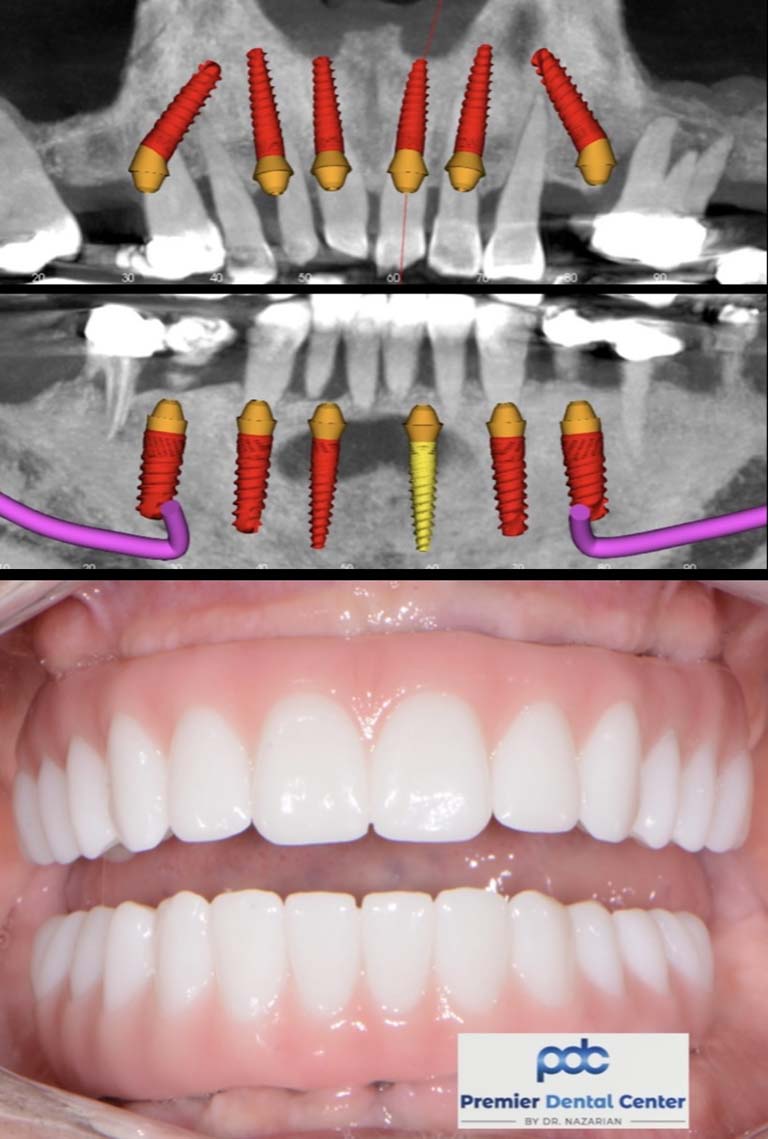Little Known Facts About Dental Sense.
Little Known Facts About Dental Sense.
Blog Article
All about Dental Sense
Table of ContentsThe Definitive Guide to Dental SenseThe Buzz on Dental SenseHow Dental Sense can Save You Time, Stress, and Money.Not known Details About Dental Sense
are clinical devices surgically implanted into the jaw to restore an individual's capacity to chew or their appearance. They give assistance for artificial (phony) teeth, such as crowns, bridges, or dentures. When a tooth is lost due to injury or condition, an individual can experience issues such as rapid bone loss, defective speech, or changes to eating patterns that lead to discomfort.Oral dental implant systems include a dental implant body and dental implant abutment and might also consist of an abutment addiction screw. Wisdom tooth cavity. The dental implant body is surgically put in the jawbone instead of the tooth's origin. The dental implant joint is generally affixed to the dental implant body by the joint fixation screw and extends with gums into the mouth to support the connected man-made teeth
(https://profile.hatena.ne.jp/dentalsense1/)Structure of The Dental Implant System selecting dental implants, talk with your oral company about the prospective advantages and dangers, and whether you are a candidate for the procedure. Points to consider: Your overall wellness is an essential consider establishing whether you are a great prospect for dental implants, the length of time it will certainly take to recover, and how much time the implant might remain in place.
Cigarette smoking might influence the healing procedure and decrease the long-lasting success of the implant. The recovery procedure for the implant body might take numerous months or longer, throughout which time you commonly have a short-term joint in place of the tooth. the oral implant treatment: Carefully follow the dental health guidelines offered to you by your dental copyright.
The Best Strategy To Use For Dental Sense
Implant failure can lead to the requirement for one more surgery to fix or change the dental implant system. Brings back the capacity to chew Recovers aesthetic look Assists keep the jawbone from shrinking because of bone loss Preserves the health and wellness of the surrounding bone and periodontals Assists keep nearby (neighboring) teeth secure Boosts lifestyle Damages to surrounding all-natural teeth throughout implant placement Injury to the surrounding tissues throughout surgery, such as sinus opening Injury during surgery (as an example, fracture of bordering jawbone) Insufficient function, such as feeling like the teeth do not attack with each other normally A sensation that the tooth is loose or twisting in position resulting from a joint screw loosening Implant body failure (looseness of the implant body) as a result of systemic infection, which may be most likely in people with uncontrolled diabetes mellitus due to regional infection in bone and gums sustaining the dental implant body due to delayed healing, which may be most likely in people who smoke Trouble cleaning up the periodontals around the dental implant, resulting in bad oral health Unattended periodontal disease Post-surgical pins and needles because of nerve impingement or damages Constantly alert healthcare service providers and imaging professionals that you have oral implants prior to any type of magnetic resonance imaging (MRI) or x-ray procedures.
FDA is not mindful of any type of unfavorable events reported for MRI or x-ray procedures with dental implants. Dental implants systems are normally constructed from products that comply with worldwide consensus criteria of the International Organization for Standardization (ISO) or ASTM International. These standards have information of what makes a safe product.

A dental implant is a framework that replaces a missing tooth. With screw-like tools, the surgeon inserts an implant right into the jawbone, and it functions as a support for a synthetic tooth, called a crown. A device called an abutment connects the artificial tooth to the dental implant. The crown is customized to fit the individual's mouth and match the shade of their teeth.
More About Dental Sense
Some people are not qualified for dental implant surgical procedure. It is for oral cosmetic surgeons to operate individuals with: intense illnessuncontrollable metabolic diseasebone or soft cells condition or infectionIf these issues are fixed, an individual can have the surgical procedure. In, dental doctors avoid operating on individuals with: If individuals with any of the above undergo oral implant surgical treatment, there is a higher danger of the dental implant falling short.

Oral implant surgical procedure is a customized procedure. It's not the very same for every person. The complying with gives a general summary of what you can expect your dental practitioner, oral surgeon, periodontist or prosthodontist to do: Place the implant operatively. Offer you time to heal. Connect the post and final crown, bridge or denture.
Next, your surgeon will thoroughly put the dental implant right into your jaw. Lastly, your specialist will certainly rearrange your gums and close the laceration with stitches. If your published here dental implant is near the front of your mouth, your dental practitioner will make a short-lived tooth for you to wear up until you heal. In this way, you won't have a void in your smile while you recuperate.
Dental Sense for Dummies
During the healing phase, your jawbone needs to fuse to the dental implant. This process can take anywhere from three to nine months.
When your dental implant heals, your dental practitioner can connect the abutment (tiny port blog post) and your last restoration (crown, bridge or denture). This usually takes concerning one hour to finish and may need a second small surgical procedure. You should not feel any kind of discomfort throughout your dental implant procedure due to the fact that your service provider will certainly make use of medicine to numb your gum tissues.
Report this page